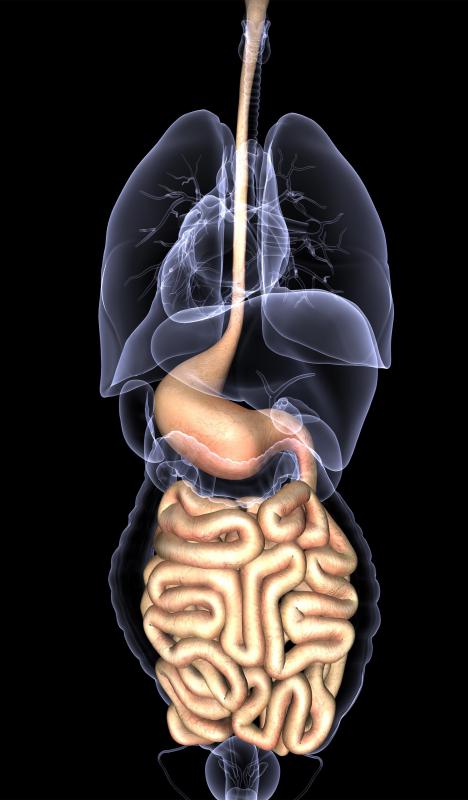At TheHealthBoard, we're committed to delivering accurate, trustworthy information. Our expert-authored content is rigorously fact-checked and sourced from credible authorities. Discover how we uphold the highest standards in providing you with reliable knowledge.
What is an Ileostomy?
An ileostomy, also known as an enterostomy, is a surgical procedure used to create an artificial exit for bodily waste when the lower portion of the digestive system is not functioning properly. Ileostomy surgery may be performed to treat a variety of conditions involving the intestines when traditional treatment options are not viable. As with any medical procedure, there are serious risks associated with an enterostomy procedure and these should be discussed with a qualified health care provider prior to pursuing surgery.
There are certain conditions which may require intestinal surgery making an ileostomy procedure necessary. Individuals with inflammatory bowel disease, Crohn’s disease, or ulcerative colitis are the most common candidates for an enterostomy procedure. Other conditions for which this procedure is used include certain cancers, including rectal and colon, congenital defects, and sustained trauma that directly affects the functionality of the intestines.

In some cases, prior to conducting an enterostomy procedure, the individual may undergo surgery to remove part of his or her small intestine or the entire large intestine and rectum. The ileostomy may be created for either short- or long-term use, depending on the individual’s situation. Short-term use of an enterostomy may be utilized when a partial removal of the small intestine is performed, allowing the remaining portion of small and large intestine a period of rest before restoring functionality. The long-term use of an enterostomy occurs when the entire lower portion of the digestive system, including the rectum, are removed.

Conducted under general anesthesia, an enterostomy procedure involves the introduction of a small incision in the abdominal wall to aid with the formation of an artificial opening, or stoma. The lower portion of the small intestine, known as the ileum, is looped around and used to create the stoma. A short-term, or partial, enterostomy may be reversed within about three months of placement. When the ileostomy is no longer necessary, another surgical procedure is performed to reconnect the ends of the small intestine and restore proper digestive function.

In some cases, the looping of the small intestine is initially performed to create an ileostomy pouch when the entire large intestine and rectum are removed. Following the surgical removal of the lower portion of the digestive system, the individual may be outfitted with an external pouch, which is worn to collect processed waste that is expelled through the stoma. The type of pouch utilized is dependent on the individual’s situation and may involve the creation of a J-, S-, H-, or W-pouch.

A continent ileostomy, also known as a K-pouch, involves the attachment of a pouch to the anus following a partial enterostomy. The K-pouch allows the individual the ability to void his or her bowels with some normalcy. Placed inside the body, the pouch is emptied with the use of a catheter inserted through the stoma, which remains covered with gauze when not in use. Not widely used, the K-pouch has the tendency to loosen and slip, requiring corrective surgery to restore it to its intended position.

Individuals who have an enterostomy procedure may be hospitalized for up to one week following surgery. Immediately following surgery, the individual will be placed on a diet of clear liquids, and over time thicker fluids are given. As functionality is restored to the bowel, the individual may be able to start eating soft foods within two days following surgery.

Once the individual is able to consume a normal diet, she or he may experience changes in digestion. Foods that the individual was once able to eat without any problem may be more difficult for him or her to digest and process. Consuming some raw vegetables and high fiber foods may result in the formation of a blockage within the digestive tract and cause abdominal discomfort when passed through the stoma. Individuals who have had an enterostomy may also experience increased instances of diarrhea and gas that may subside over time.

As with any surgical procedure, there are serious risks associated with an enterostomy procedure. Risks associated with any surgery that involves the use of a general anesthetic include heart attack, stroke, and breathing difficulty. Complications related to an enterostomy procedure may include internal abdominal bleeding, dehydration associated with ileostomy drainage, and infection.
AS FEATURED ON:
AS FEATURED ON:


















Discuss this Article
Post your comments